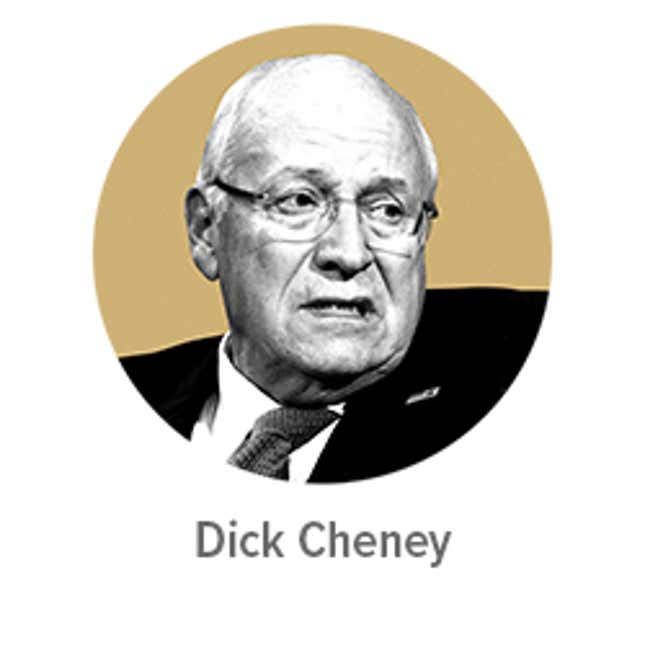The sacred and the profane: A former D.C. charter school board member calls for change
By Valerie Strauss, Washington Post Reporter
September 23, 2021 at 10:29 a.m. EDT
Steve Bumbaugh is a former member of the D.C. Public Charter School Board, having served on the seven-member volunteer panel from 2015 until early this year. During that time, Bumbaugh visited numerous charter schools and attended many board meetings where questions of whether schools should be authorized, sanctioned or closed were discussed.
Charter schools are publicly funded but operate independently from the school systems in the areas where they are located. In the nation’s capital, charters enroll nearly as many of the city’s schoolchildren as the system does. Supporters of charters say that they provide families with a necessary alternative to schools in traditional districts. Critics say they do not, on average, provide better student outcomes than traditional districts and steer public money away from districts that educate most schoolchildren.
Bumbaugh is a big supporter of charter schools. In this unusual post, he writes about his experience on the charter board and makes recommendations for change that he said will be bring better representation from the community.
Bumbaugh has worked in the education field for several decades in various roles. He earned a bachelor’s degree in economics and political science at Yale University and an MBA at Stanford University Graduate School of Business.
By Steve Bumbaugh
Let’s travel back to September 2017. I was in Southeast Washington, D.C., scheduled to tour a school in an hour. I remember visiting 25 years ago when it was part of the D.C. public school system. That school was closed in 2009 — one of dozens closed in the last 15 years — and now several charter schools occupy the campus.
At the time of this visit, I was a member of board of the D.C. Public Charter School Board (PCSB), having started my tenure in 2015 and serving until early this year. In that capacity, I visited dozens of D.C.-based charter schools. Sometimes, I left those visits saddened, even defeated.
This was one of those times.
Over several decades of work at the intersection of education and poverty, I have learned that much of a school’s character can be divined through its start-of-the-day ritual. So on that day in 2017, I arrived early and sat in my car, far enough away that no one seemed to notice me, but near enough so that I could observe the comings and goings. Several young Black women arrived at school with their children who look to be 5 or 6 years old. They were greeted by staff members, and I observed them having what appeared to be tense conversations with the women. Some of these women left with their children in tow. Others handed their children over to staff members and departed.
When I entered the school for my scheduled visit, I was greeted by one of the founders, a 30-something man with energy and charm. He was joined by the school’s board chair, a distinguished senior partner from one of D.C.’s blue-chip law firms. They took me on a tour of several classrooms. I noticed that the leadership of the school was entirely White as were many of the teachers. All of the students were African American, most from families that struggle financially.
For the most part, the school looked like most other “no excuses” charter schools in the nation’s capital, dotting low-income African American neighborhoods, and in other places across the country.
These schools start with the belief that there is no good reason for the huge academic gaps between privileged and poor minority students — and that strict discipline, obedience, uniform teaching methods and other policies could erase the gaps. A feature of many of these schools, and one evident on this site visit, are lines painted on the hallway floors. Students are expected to walk on these lines as they move from classroom to classroom. Any deviation is likely to result in punishment. The only other places I had seen this before was at correctional facilities.
I entered a preschool classroom where students were gathered in a semi-circle on a rug. Like curious 4-year-olds everywhere, the students turned their heads to scrutinize us. Many smiled widely and some even waved. The teacher snapped at the children, demanding their attention. I was startled by her aggression. They were, after all, 4-year old children engaging in age-appropriate behavior.
That evening I called a staff person from this school who I’ve known for several years. I asked her to translate the scenes I witnessed outside the school. The conversation went something like this:
–“Those scholars probably had uniform violations. The staff persons were probably telling the moms to go home to have the kids change.”
–“I didn’t notice that they were wearing anything different from the other children.”
–“Well, they may have had the wrong color shoes. Or maybe they had the correct color shirt, but it didn’t have the school’s insignia on it.”
–“They have to go back home for that?”
–“Unless they want to spend the day in a behavior support room.”
Incredulous, I pressed my friend for details. I discovered that children as young as 3 years old could spend an entire day in seclusion, away from their classmates, if they were wearing the wrong color shoes. I am dumbstruck. Is this even legal?
This sort of interaction between students and staff was not uncommon in no-excuses charter schools I visited over the years.
Occasionally I did visit schools that combine academic rigor and kindness with student bodies that are mostly Black and low-income. But those schools were the exception. I’ve seen schools where children are taught to track the teachers with their eyes, move their mouths in a specific way, and engage in other humiliating rituals that have little educational value.
I visited a school that suspended 40 percent of its 5-year-old children who had been diagnosed with disabilities. At some schools, when children are sick, their parents were forced to produce a doctor’s note because school leaders believed the parents were lying. But some of these parents were uninsured and there weren’t — and still aren’t — many doctors in their neighborhoods. Obtaining a doctor’s note required them to take their children onto packed public buses so they could go to public health clinics or emergency rooms.
Schools that still do this are telling these parents that they are not trusted. And while children in these schools are taught computational math and textual analysis, they also learn that they are congenitally profane.
Charter schools arose a generation ago in Washington, D.C. when the city was poor and in the grips of a decade-long homicide epidemic. I was part of a group of 20-somethings frustrated with the lack of progress in the city’s long-troubled public school system. We had been creating programs for the D.C. Public Schools system that dramatically outpaced the district’s regular academic outcomes, and we wanted to turn these programs into actual schools.
We talked about forging solutions with parents and students, working to retain every single student, exhorting patience about building the infrastructure from which improved academic outcomes would spring.
But little of this vision was attractive to an emerging cadre of funders and policymakers who placed huge bets on charter schools. They submitted to a vision, not based on a shred of evidence, that Black and Brown children would thrive if they were taught “character” and “grit.” The way to do this, apparently, was to create an assembly-line model of instruction with rigid rules. Children who could not abide by these rules were “counseled out” to return to traditional public schools. Now about one-third of D.C. charter schools are in the no-excuses category, enrolling at least half of the charter student population. (Some of these schools say they are changing, but I haven’t seen real evidence of that.)
Some ‘no-excuses’ charter schools say they are changing. Are they? Can they?
Remember, this was a time when Black communities were ravaged by an epidemic of crack cocaine and criminal justice laws that sent Blacks to jail for far longer sentences than Whites arrested for using essentially the same drug. Hillary Clinton, then first lady, warned against “the kinds of kids that are called super predators, no conscience, no empathy” — which many of us took to mean low-income Black children. In this context, powerful people not familiar with low-income communities were easily seduced by plans to tightly control children who might otherwise grow into dangerous adults.
The D.C. Public Charter School Board was created in 1996, at a time when homicide rates in the District were so high the city was dubbed the “murder capital.” It is no wonder the D.C. Public Charter School Board jumped on the “no-excuses” bandwagon.
What have we gained from this system? As of 2018-19 — the latest data available on the website of the charter school board — only 8.5 percent of Black high school students (about 80 percent of the student population) in charter schools were deemed proficient in math and 21 percent in English Language Arts, according to scores on the standardized PARCC exam.
There are some charter schools that are doing amazing work, but the system itself is ineffective. The vast majority of our students are not remotely ready for the rigors of college coursework.
After untold millions of dollars of investment and the creation of scores of schools — there were 128 operating this year — it is time for us to admit that this experiment is not working as it should.
So what must be done?
The District must rethink its charter schools, and more specifically, charter schools must be integrated. “Chocolate City” has been replaced by a city where upper-income White residents and a more diverse spectrum of Black residents exist in equal numbers.
One of the few scalable policies that dramatically improved academic outcomes for Black students was the integration of American public schools in the 1970s and ’80s. The Performance Management Framework that ranks the quality of each charter school should ensure that schools reflect the demographics of the city as it is today, particularly given that charter schools are not constrained by neighborhood boundaries that enforce segregation in traditional public schools.
New York City provides a replicable, legal model to enact a charter school system that prevents the proliferation of a worrying trend in D.C’s charter schools: elite charters that essentially shut out vulnerable, low-income Black children. (Though the city also has some of the most egregious no-excuses charters.)
What we have now, with some notable exceptions, is a system where highly resourced families crowd into a handful of desirable schools that have impossibly long waiting lists, and students from poor families attend no-excuses schools or charters that struggle to remain open. A school that serves a student body where 6-8 percent of the students meet the definition of “at risk” should not be considered top tier when 51 percent of the students (a statistic confirmed by a charter board staff member) in the entire system are at risk.
Similarly, schools should not be penalized or subtly encouraged to move out low-performing students when they serve student bodies that are overwhelmingly at risk.
“Separate and equal” should not stand in one of the most liberal cities in the United States.
Moreover power needs to be distributed more evenly. At first glance, the concentration of institutional power is not evident at the Public Charter School Board.
Most of the board members, including the current executive director, are Black or Latino. A closer look — and I am including myself in this observation — reveals that we are not remotely similar to most of the families with children attending D.C. public charter schools. Fully 80 percent of these families are African Americans who qualify for free and reduced lunch, which is not the same as at risk, but which is generally seen as a proxy for school poverty.
The people who are on the charter school board are highly educated professionals. Since I began serving on the panel — which has seven rotating volunteers, all appointed by the D.C. mayor — there have been 10 sitting members, half of whom attended Yale, Stanford or Harvard universities, or some combination of the three. We are well-versed in the contours of institutional power and know how to operate inside of its rarely articulated but clearly delineated boundaries. We’ve been rewarded for decoding these rules and abiding by them, which is precisely why we are selected for these coveted roles. We provide cover through optical diversity.
But if we really want to embrace equity, it’s time to rethink the make-up of the Public Charter School Board. D.C. Mayor Muriel Bowser will have a unique opportunity to reshape this board over the coming year as five of its seven members will be termed out.
We need a board with members who reflect the communities served by D.C. charter sector. As cities move away from elected school boards to mayoral appointments, it’s critical that the voices that used to represent low-income communities continue to be present.
In the District, 80 percent of families attending charters are eligible for free and reduced lunch, but the charter school board has not in its 25-year history appointed a single board member who lives in poverty. Why not adjust the PCSB’s contours to reflect the communities in which these schools are located instead of incessantly asking poor Black people to acclimate?
Continuing to govern charter schools without input from low-income parents robs them of agency. This one-way flow of power is precisely the mistake this movement has made at the student level. Involving parents in the co-architecture of the sector would signal an evolutionary step forward.
Lastly, “no excuses” schools must be banned outright. The central failure of the education reform movement is the mimicking of carceral institutions, established and often celebrated by highly resourced outsiders. The idea that low-income Black and Latino students need to be tightly controlled in order to do well is a relic of Jim Crow.
—
My parents were Protestant ministers whose doctrine was best reflected in Jesus’s Sermon on the Mount. In their theology, elites look askance at the most vulnerable even though it is the most vulnerable — the poor, the outcasts — who can redeem a flawed world. It is the poor who are sacred. Their unearned suffering is both incessant and redemptive. This inversion of what is truly sacred and what is genuinely profane is a persistent theme in religion because the human spirit is so inclined to side with power; the path of least resistance. The education reform world is no different in this regard.
When I was teaching at Eastern High School in the early 1990s, we forbade our students from wearing T-shirts popular with their generation that sported curse words and gun imagery. Teenagers being teenagers, they pushed back against this restriction accusing us of violating their rights.
Over lunch one day, we put the dress code on trial. In my closing argument I asked the defendant if he would wear an offending T-shirt to his grandmother’s house or to church. “No” he responded. Somewhat theatrically I leaped: “Of course you wouldn’t! Your grandma’s house and church are sacred spaces.” I pulled the snare tightly across the throat of his argument, asking him in a whisper: “Why isn’t my classroom a sacred space?”
Then as now, the sacred places don’t exist in their neighborhoods. Where are the bookstores and the movie theaters and the art studios? They are in the wealthier neighborhoods where the people are sacred.
This hoarding of the sacred expresses itself in remarkable fits of paradox. In the education reform world, those of us who can retreat to our own sacred places sometimes expect to be praised for the simple reason that we take notice of the profane at all.
So even though the education reform world is replete with leaders whose own children are too sacred to attend the schools they found or fund or otherwise support, we are expected to ignore the contradiction when we tout these schools to the general public.
This is because there is an understanding at an almost cellular level that some children deserve sacred spaces and others should gratefully accept what the sacred give them.
In an era when Black Lives Matter signs are ubiquitous and a national conversation is underway about how to untangle our historical caste system, the PCSB has a role to play.
We can create a system that sees every child as sacred, regardless of ethnic stripe or socio-economic status.
And because effective social movements are not led by outsiders, we must create a system where families who attend these schools fully participate in the institutions of power. This is the beautiful, messy contract required by democracy.














